For "Travel Tuesday". This week let's visit some of West TX:
Monahans Sandhills State Park
"Monahans Sandhills State Park consists of 3840 acres of sand dunes, some up to 70 feet high, in Ward and Winkler Counties, about a half-hour's drive west of Odessa. A majority of the land was leased in 1956 by the state from a private foundation (Sealy-Smith Foundation) until 2056 and was opened in 1957. The Williams family of Monahans, Texas, also leased to the state approximately 900 acres for the park.
More than 400 years ago, Spanish explorers were the first Europeans to report the vast hills of sand. Man was present in this area as far back as 12,000 years ago. Later, various Indian tribes used the area for temporary campgrounds and a meeting place, finding game, abundant fresh water beneath the sands, acorns, and mesquite beans available for grinding into paste with their stone tools. The area remained a favorable environment for Indians until the 1880s, when the Texas and Pacific Railroad selected Monahans as a water stop between the Pecos River and the town of Big Spring.
See 4,000 acres of wind-sculptured sand dunes like the classical landscape of the Sahara. The park has a museum and interpretive center, picnicking, camping and sand surfing. Huge sandhills area, only part of which is in park, was a formidable obstacle to pioneer travelers and wagon trains. Native Americans knew it better and frequently camped here because pure, fresh water could be found between certain dunes by scooping a trench in sand.
Not apparent to eye is one of the largest oak forests in the nation, stretching across 40,000 acres of arid land. The "forest" is not apparent because mature trees (Havard oaks) are seldom more than three feet high, yet they send down roots as far as 90 feet to maintain miniature surface growth.
In the late 1920s, oil production began in the area, now commonly known as the Permian Basin, and today Monahans is a marketing center for more than 800 square miles of oil and cattle country.
Activities: Activities include camping; hiking; picnicking; equestrian; bird and wildlife watching from the interpretive center windows, as they come to the watering stations; and sand surfing. Texas Camel Treks are held at the park.
Campsites & Other Facilities: Available facilities include a new Visitor/Interpretive Center built to ADA specifications; campsites with water; electricity, and shade shelters; campsites with water for tent campers; an equestrian day-use area, of approximately 600 acres, that has a staging area with hitching posts and water for horses; a group dining hall (constructed in 1903 first used as a railroad section house) with a kitchen and a restroom; an interpretive center with restrooms and a snack machine; a self-guided, 1/4-mile nature trail; and one working oil well.
Area Attractions: Points of interest nearby include Balmorhea State Park, Big Spring State Park, Million Barrel Museum in Monahans; the Odessa Meteor Crater, a national, natural landmark; and the Cities of Midland and Odessa."
More at: http://www.tpwd.state.tx.us/spdest/findadest/parks/monahans_sandhills/
___________
The Million Barrel Museum in Monahans, Texas
"Back in 1928, Shell Oil Company needed a place to store crude, a lot of it. Since the price was climbing, it seemed worthwhile to build a container big enough to match potential profits. The result was the Million Barrel Tank pictured, and it had a solid roof made of California redwood. It was filled to the brim once, and it might have stayed in use longer if the stock market crash of 1929 hadn't driven oil prices to record lows.
The tank stood empty for decades, until entrepreneurs in the fifties decided to turn it into a water park. They added a boat ramp and briefly attracted boaters and fishermen. Following is a reminiscence we received in January, 2006, from Wallace Dickey, Jr., nephew of the entrepreneurial couple who owned the tank for many years:
"My uncle and aunt Wayne & Amalie Long were the entrepreneurs that bought the Million Barrel Oil Tank and tried to turn it into a swimming and fishing hole in the 1950s. I personally was there in the summer of 1958 when I was in high school when they tried to turn it into a stock car racetrack after it would not hold water long enough for fishing and swimming. It was my aunt, after my uncle's passing in 1980, that turned it into a museum and donated it to the state for a state park that makes it what it is today." More at: http://www.roadtripamerica.com/places/monahans.htm
____________
The Odessa Meteor Crater

"Shower of Meteorites plunged to earth some 20,000 years ago, shattering limestone bedrock and leaving explosion pit some 500 feet in diameter; other smaller adjacent pits. Over the centuries, desert winds silted crater almost level with surrounding plains, and site was not identified as Meteor crater until the 1920s. Today a marked nature trail winds through crater.
A 165 foot shaft was sunk in the center of the main crater primarily to locate the main mass of the Meteor which was believed still buried. However, the shaft revealed that there was no huge mass buried. It is now known that the main mass, of an estimated 70 tons, which formed the main crater, was traveling at such a high rate of speed that it exploded and vaporized upon contact with the earth. Therefore, the main crater is an "explosion crater." More at: http://www.caver.net/odemetcr.html
___________
Midland-Odessa:
"In the past, the cities of Midland and Odessa experienced a rivalry of bitter competition and political intrigue. Since the early 1990s, the nature of the rivalry has changed into one of friendly competition and economic cooperation. The Midland–Odessa area today is marketed as "Two Cities, no Limits."
The Midland–Odessa combined statistical area, informally known as The Petroplex, is located in West Texas in a petroleum rich area called the Permian Basin.
The Permian Basin is a sedimentary basin largely contained in the western part of the U.S. state of Texas and the southeastern part of the state of New Mexico. It reaches from just south of Lubbock, Texas, to just south of Midland and Odessa, extending westward into the southeastern part of the adjacent state of New Mexico. It is so named because it has one of the world's thickest deposits of rocks from the Permian geologic period. The greater Permian Basin comprises several component basins: of these, Midland Basin is the largest, Delaware Basin is the second largest, and Marfa Basin is the smallest. The Permian Basin extends beneath an area approximately 250 miles (400 km) wide and 300 miles (480 km) long.
The Permian Basin gives its name to a large oil and natural gas producing area, part of the Mid-Continent Oil Producing Area. Total production for that region up to the beginning of 1993 was over 14.9 billion barrels. The towns of Midland and Odessa serve as the headquarters for oil production activities in the basin.
Midland–Odessa enjoys a climate typical of the resort cities of the Southwest United States. The terrain type is described as semi-arid mesquite-mixed grassland subtropical steppe.
The Midland-Odessa Symphony & Chorale (MOSC) has performed in the Permian Basin for over 45 years, and is the region's largest orchestral organization, presenting both Pops and Masterworks concerts throughout the year. Composed of professional musicians from the area as well as Lubbock, San Angelo and other surrounding cities, the MOSC also is home to three resident chamber ensembles, the Lone Star Brass, Permian Basin String Quartet and West Texas Winds. These ensembles are made up of principal musicians in the orchestra, who come to the area from across the United States."
----------
Midland:
Clockwise from top: Midland's skyline as seen from Hogan Park; Midland High Bulldogs on a Friday night football game; Road-side sign seen driving into Midland; Pumpjacks are a common sight around the Permian Basin
"Midland was originally founded as the midway point between Fort Worth and El Paso on the Texas and Pacific Railroad in 1881. The city has received national recognition as the hometown of former First Lady Laura Bush, and the onetime home of former President George H.W. Bush, former President George W. Bush, and former First Lady Barbara Bush.
People in Midland are called Midlanders."
--------------
Odessa
"Odessa was founded in 1881 as a water stop and cattle shipping point on the Texas and Pacific Railway. The first post office opened in 1885. Odessa became the county seat of Ector county in 1891 when Ector county was first organized. It became an incorporated city in 1927, after oil was discovered in Ector county on the Connell Ranch southwest of Odessa.
With the opening of the Penn Field in 1929, and the Cowden Field in 1930, oil became a major draw for new residents. In 1925 the population was just 750, by 1929 it had risen to 5,000. Due to increased demand for oil during the second world war the city's population had expanded to 10,000.
Located in Odessa, Texas, the Globe of the Great Southwest is a replica of William Shakespeare's original Globe Theatre. In addition, the complex also features a replica of Anne Hathaway's Cottage. Both buildings are located on the campus of Odessa College.
The Globe Theatre is a non-profit organization presenting classical and modern plays on an Elizabethan stage. The Globe hosts community theater performances, monthly country-western shows called The Brand New Opree, and other community activities. The Anne Hathaway Library next door, a replica of the cottage in which Shakespeare's wife lived, houses displays of special interest to Shakespeare fans. Full-time theatre activity began in the fall of 1968. It hosts plays and other community groups throughout the year as well as an annual Shakespeare festival.
Stonehenge replica on campus of the University of Texas of the Permian Basin in Odessa
Completed in 2004, the replica is horizontally equal to the Stonehenge in England but only 70 percent of the vertical height of the original.

The "World's Largest Jack Rabbit" was first pioneered by former Attorney General John Ben Shepperd during his term as Odessa Chamber of Commerce president in 1962. Tom Taylor, who is the former head of the Texas Highway Department Travel and Information Division first initiated the idea of the fiberglass statue. Taylor suggested that the city erect a monument to the jack rabbit, since there were so many in the area. In 1962, Odessa Chamber of Commerce officials, under the leadership of John Ben Shepperd, erected the 8-foot statue on Lincoln Street."
-------------------
There is lots to see in West TX!
_____________
On This Day:
U.S. Army launches K-9 Corps, Mar 13, 1942:
"On this day in 1942, the Quartermaster Corps (QMC) of the United States Army begins training dogs for the newly established War Dog Program, or "K-9 Corps."
Well over a million dogs served on both sides during World War I, carrying messages along the complex network of trenches and providing some measure of psychological comfort to the soldiers. The most famous dog to emerge from the war was Rin Tin Tin, an abandoned puppy of German war dogs found in France in 1918 and taken to the United States, where he made his film debut in the 1922 silent film The Man from Hell's River. As the first bona fide animal movie star, Rin Tin Tin made the little-known German Shepherd breed famous across the country.
In the United States, the practice of training dogs for military purposes was largely abandoned after World War I. When the country entered World War II in December 1941, the American Kennel Association and a group called Dogs for Defense began a movement to mobilize dog owners to donate healthy and capable animals to the Quartermaster Corps of the U.S. Army. Training began in March 1942, and that fall the QMC was given the task of training dogs for the U.S. Navy, Marines and Coast Guard as well."
____________
Yesterday:
Jay was to be taken to his doctor's office by his neighbor, but he called the night before, and wanted me to take him. He was supposed to be there at 8.00am, so it was still dark when Misty and I went to get him. It was a mad scramble for me, and he wasn't ready when we got there. I get very panicky when running late for an appointment, but he got his tests done.
Then we stopped at a Kroger's and I bought some buffalo ground meat on sale. I have never eaten it, so it will be something different, and I hear it is very tasty. When I find a good recipe, I will cook it all, and freeze some for another day.

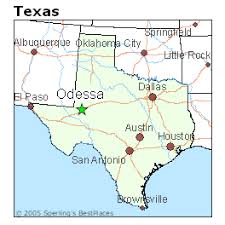
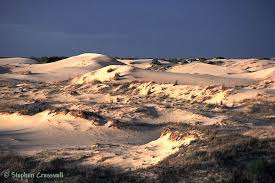



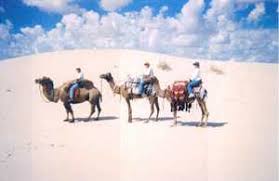
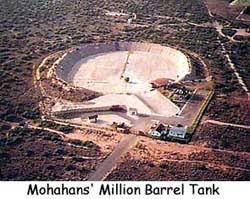
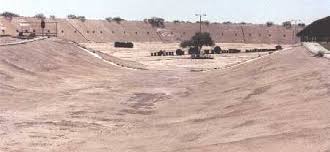



















2 comments:
I love buffalo. Used to get buffalo steaks at the Whole Foods Market in Houston. Does Kroger carry the buffalo steaks, also?
Thanks for your comment, DD.
I don't know if they carry buffalo steaks as I have never looked for them. I was looking in the "Oops,we cut too much meat" bin for some organic beef, when I saw it.
Happy Tails, and Trails, Penny, TX
Post a Comment